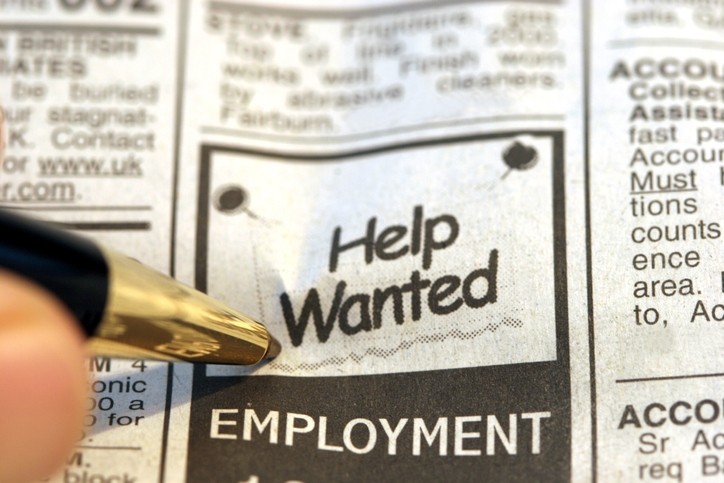Labor market nears full recovery, but CPG industry sees ‘mediocre job growth’ – threatening supply chain, Consumer Brands Association warns

In March, the unemployment rate dropped to 3.6% with the addition of 431,000 jobs – a decrease from 3.8% a month earlier that brings the rate almost in line with pre-pandemic levels of 3.5% in January 2020, the Labor Department announced Friday.
Much of this growth came from segments hardest hit by the pandemic when the COVID-19 outbreak first occurred in the US, according to the Labor Department, which reported employment in leisure and hospitality gained 112,000 in March, including 61,000 at food and drinking places, and employment at retail trade increased 49,000, including more than 18,000 in food and beverage stores.
Manufacturing also added 38,000 jobs last month, including 16,000 jobs in the nondurable section, which includes food.
Across categories, there were also notable gains in the number of women and retired workers returning to the workforce after many were pushed out or ‘voluntarily’ left at the start of the pandemic for myriad reasons.
Roughly 2.6m Americans retired earlier than expected between February 2020 and October 2021, according the Federal Reserve Bank of St. Louis. According to the Labor Department, more than 300,000 women returned to work in March – accounting for much of the overall growth – and according to analysis in the Wall Street Journal, the share of retired workers returning to work climbed to 3%.
This shift likely is fueled by childcare needs easing as schools have more consistently held classes in-person and daycares have reopened, the risk of contracting COVID-19 easing as caseloads drop, and household savings running low after more than two years of unemployment in some cases.
‘We have to ask what keeps workers on the sidelines’
Despite these gains, employment in each of these segments remains lower than in February 2020, according to the Labor Department. For example, employment in leisure and hospitality is still down 1.5 million or 8.7% since February 2020, and manufacturing employment is still down by 128,000 or 1%. Retail trade is about level with pre-pandemic employment.
Within the CPG industry specifically, the addition of 4,294 jobs last months represents “little progress” against the industry’s 112,000 job openings, which when combined with the “tremendous uncertainty in the world” is keeping the supply chain “at a perpetual breaking point,” according to analysis by the Consumer Brands Association.
“A robust labor force is our best strategy to guard against supply chain challenges,” and the “mediocre job growth” in the CPG industry “means consumers have seen the consequences in spotty shortages when they shop for essentials,” CBA president and CEO Geoff Freeman said.
Frustrated by the slow jobs growth across the CPG industry, Freeman called on industry to “solve the root cause of the industry’s labor shortage.”
He explained: “We have to ask what is keeping workers on the sidelines, how many of them may return to the labor force and what it will take to get them there – then determine policies that unlock their potential.”
Wages are up, but still lag behind inflation
One obvious place to look is at wages, which has tipped in the favor of potential employees in negotiations since the pandemic given the constrained labor pool.
According to CBA, wages for manufacturing facility roles rose 6.7%, outpacing the national average of 5.6% in March from a year ago. But this is still below the annual inflation of nearly 8%, which means the extra funds still aren’t stretching as far as those earned pre-pandemic.
As labor pool participants look to make up the difference many are changing jobs and moving to more lucrative fields or positions, according to research by the Conference Board which suggestions a third of American employees have changed jobs since the pandemic began and are earning upwards of 30% in their new position.
To the extent that potential employees do not see CPG jobs as competitive they will look elsewhere.
Many CPG players have raised wages or offered competitive bonuses to draw in and retain the employees necessary to meet increased demand, which remains elevated since the pandemic began. But this has a knock on effect – contributing to higher production costs and inflation, which in turn have prompted many companies to raise prices.
Slowing wage increases could influence interest rates
As businesses seek to balance their labor needs with follow-on negative implications of higher pay, some are leaning less on wage increases – as illustrated by a slight month over month slowdown in wage growth in the past two months as reported the Labor Department.
In March, hourly wages increased 0.4% over February, which in turn was up only 0.1%, the Labor Department reported Friday. Both are lower than than 0.5% average monthly wage gains since October.
While these figures are seasonally adjusted, it is notable that the faster wage growth correlated with season demand increases leading up to and during the holidays when there may have been more of a premium placed on filling slots to meet heightened customer need.
The slowdown could be viewed positively by businesses as it could reduce inflationary pressures and by the Federal Reserve which has characterized the labor market as “tight to an unhealthy level” and which it would like to see slowed to better align with supply and to bring inflation down.
The slowdown, along with the other employment shifts reported by the Labor Department on Friday, could influence how the Fed handles interest rates at its upcoming May meeting, at which it is predicted to increase rates by as much as a half percentage point on top of the quarter percentage point increase pushed through in March.







